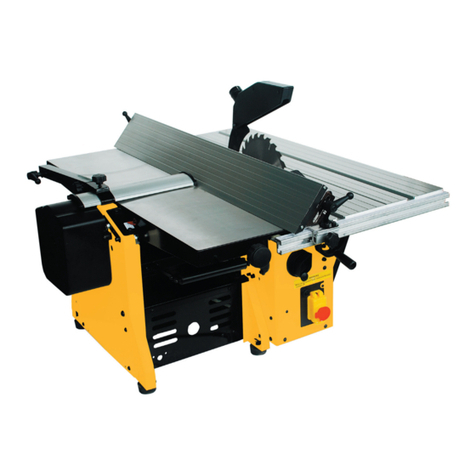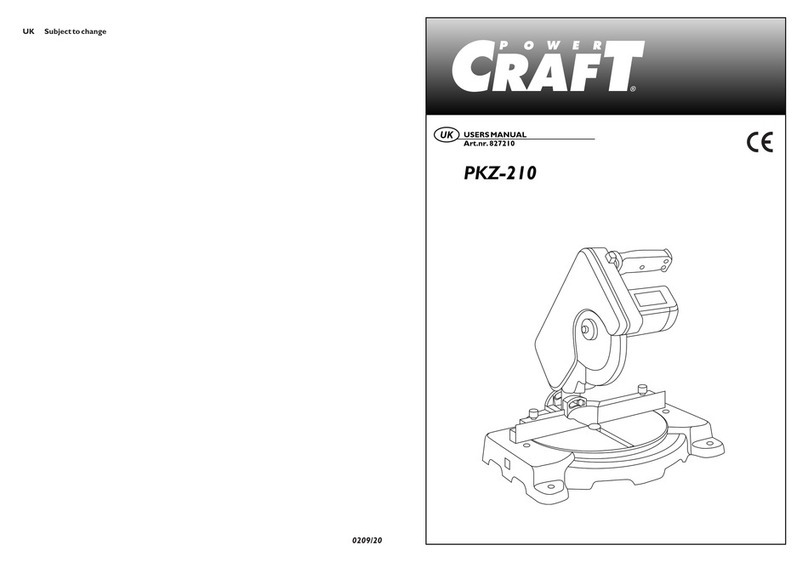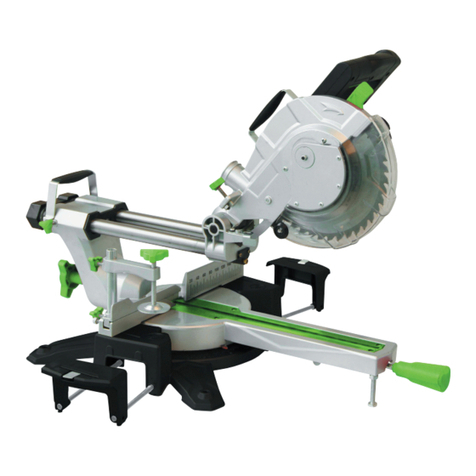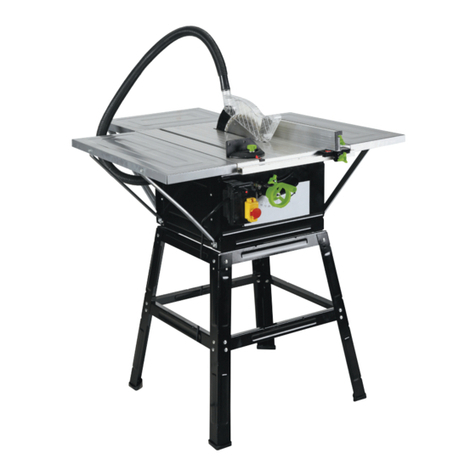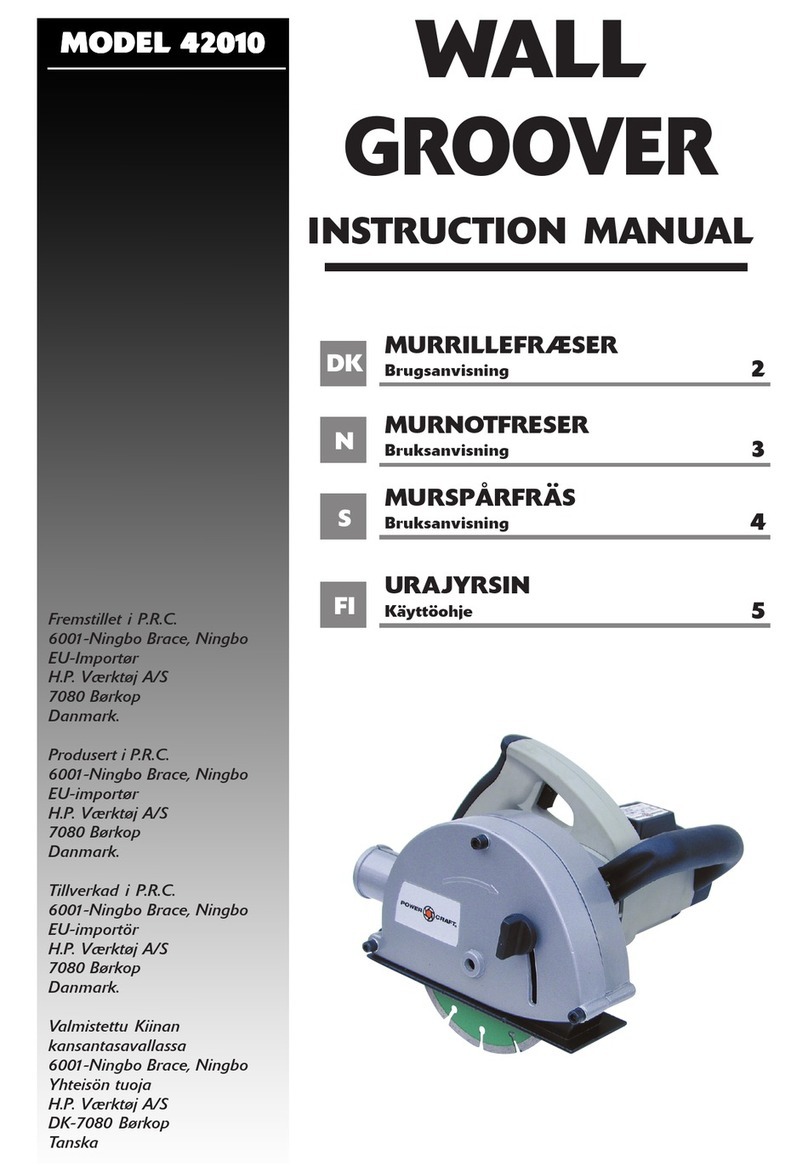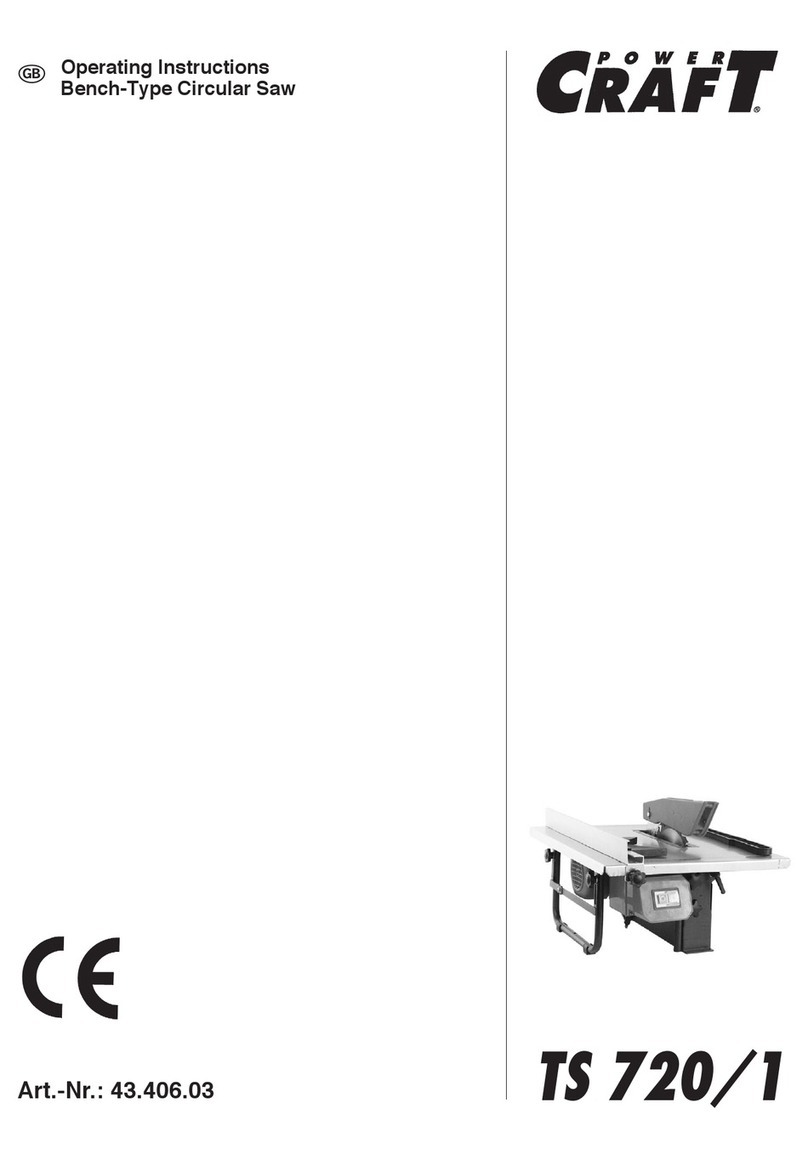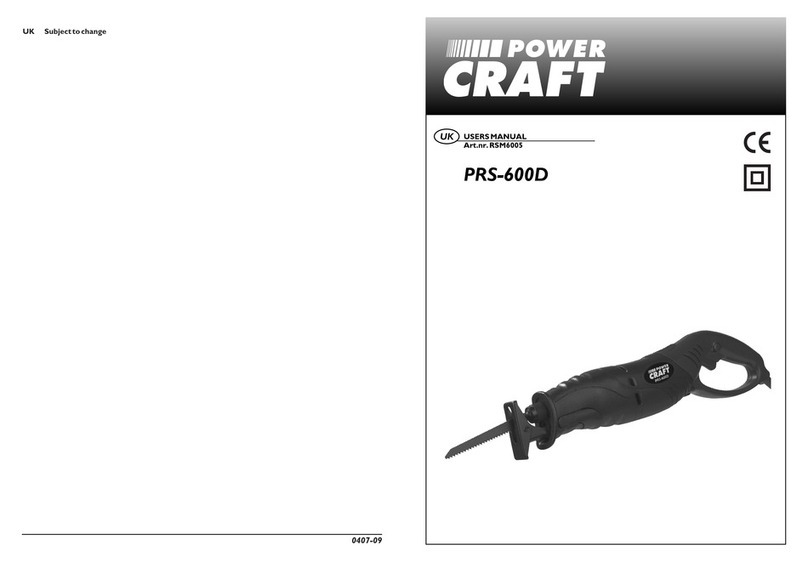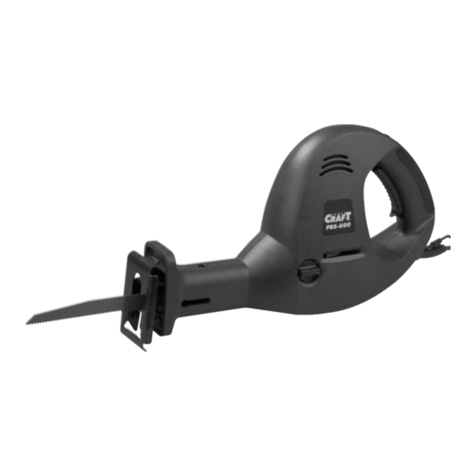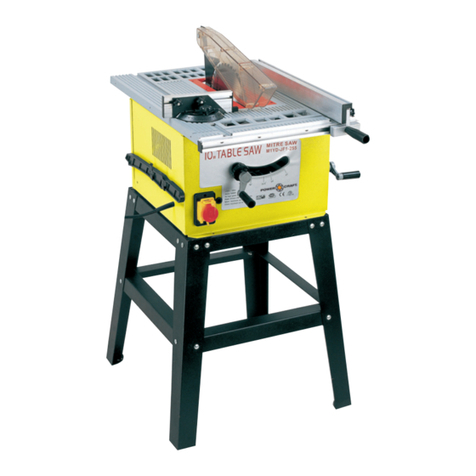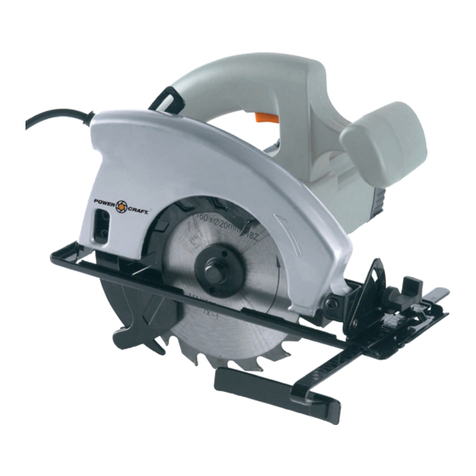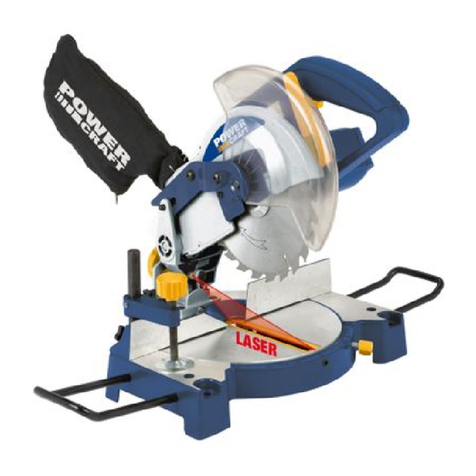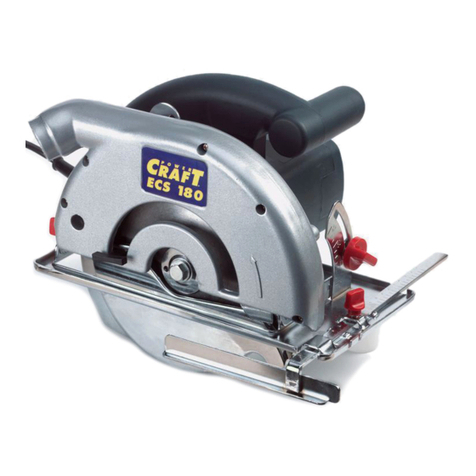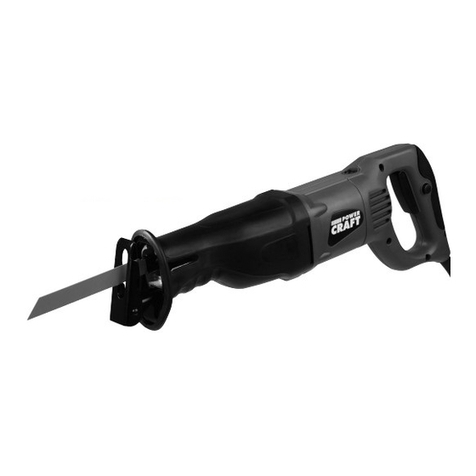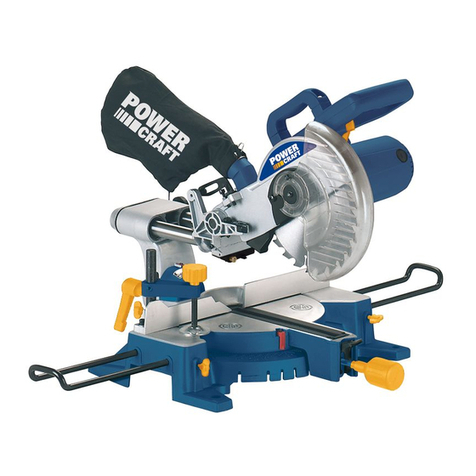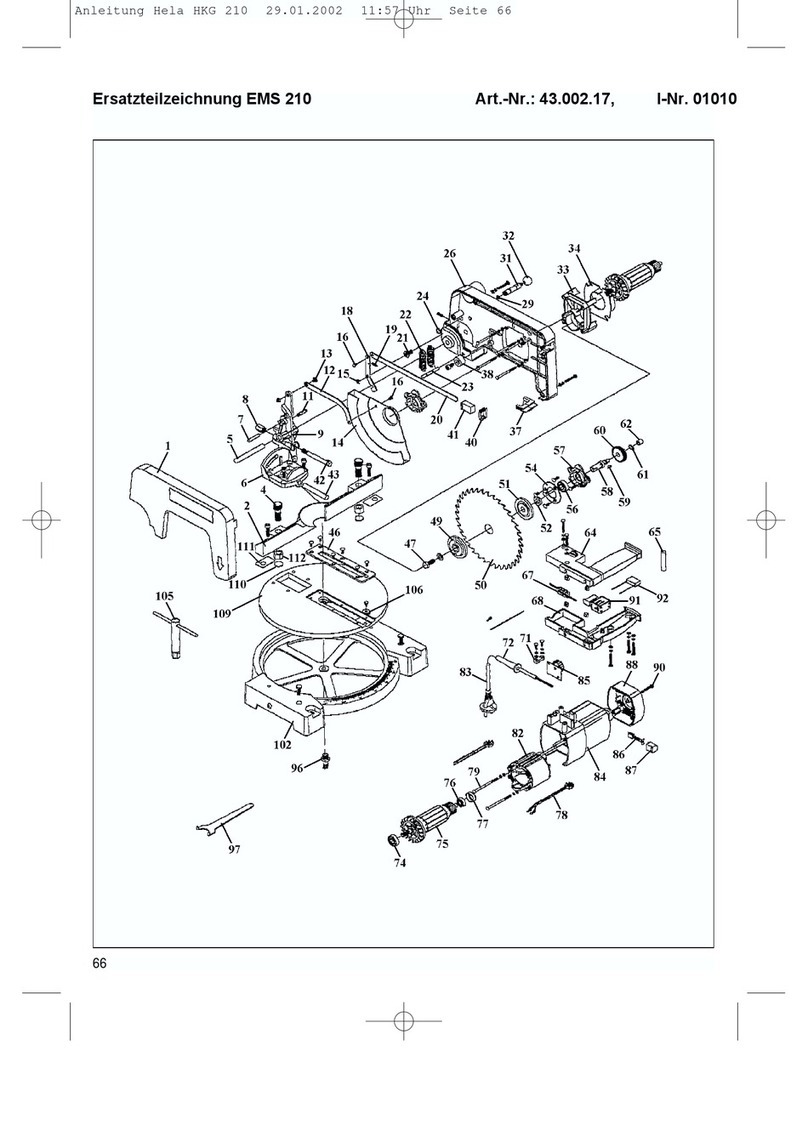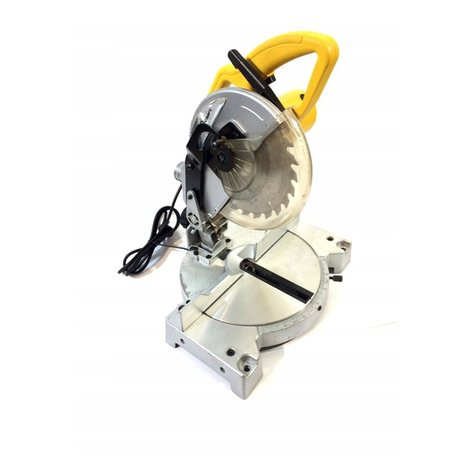Powercraft 7
1. Keep work area clear.
Cluttered areas and benches invite injuries.
2. Consider work area environment.
Do not expose power tools to rain. Do not use power tools in damp or wet locations. Keep work area
well lit. Do not use power tools in presence of flammable liquids or gases.
3. Guard against electric shock.
Prevent body contact with grounded surfaces (e.g. pipes, radiators, refrigerators).
4. Keep visitors away.
Visitors should be kept away from the work area at all times. Do not let visitors handle the machine at
any time.
5. Store unused tools.
When not in use keep tools out of reach of children. Store in a dry and secure location.
6. Do not force tool.
Do not apply undue pressure as this may affect performance and may cause damage to the
machine. Forcing the job also increases the potential for accidents.
7. Use right tool.
Do not force small tools or attachments to do the job of heavy duty tool. Do not use a tool for
purposes not intended.
8. Dress properly.
Do not wear loose clothing or Jewellery. They can be caught in moving parts. Rubber gloves and
nonskid footwear are recommended when working outdoors. Wear protective hair covering to
contain long hair.
9. Use safety glasses.
Also use face or dust mask when operation is dusty.
10. Connect dust extraction equipment
If devices are provided for the connection of dust extraction and collection facilities ensure these
are connected and properly used.
11. Do not abuse cord.
Never carry tool by cord or yank it to disconnect it from electrical socket. Keep cord from heat, oil
and sharp edges.
12. Secure work.
Use clamps or a vice to hold work. It’s safer than using your hand and it frees both hands to operate
tool.
13. Do not overreach.
Keep proper footing and balance at all times.
14. Maintain tools with care.
Keep tools sharp and clean for better and safer performance. Follow instructions for lubricating and
changing accessories. Inspect tool cords periodically and, if damaged, have repaired by
authorized service facility. Inspect extension cords periodically and replace if damaged. Keep
handles dry, clean and free from oil and grease.
15. Disconnect tools.
When not in use, before servicing and when changing accessories such as blades, bits and cutters.
16. Remove adjusting keys and wrenches.
Form the habit of checking to see that keys and adjusting wrenches are removed from tool before
turning it on.
17. Avoid unintentional starting.
Do not carry plugged-in tools with finger on switch. Be sure switch is off when plugging in.
18. Outdoor use extension cords.
When tool is used outdoors, use only extension cords intended for use outdoors and so marked.
Always use tool in conjunction with a residual circuit breaker device.
19. Stay alert.
Watch what you are doing. Use common sense. Do not operate tool when you are tired.
20. Check damaged parts.
Before further use of the tool, a guard or other part that is damaged should be carefully checked to
determine that it will operate properly and perform its intended function. Check for alignment of
moving parts, binding of moving parts, breakage of parts, mounting, and any other conditions that
may affect its operation. A guard or other part that is damaged should be properly repaired or
replaced by an authorized service centre unless otherwise indicated elsewhere in this instructions
10 Powercraft
• Manually tilt the table until the desired angle has been reached (see the graduated scale on
the machine).
• The angle can be read on a graduated scale on the machine.
• Retighten the locking nut.
Adapters for universal saw blades
Fig. F
The enclosed adapters should only be used with universal (= without pins on the end) saw
blades
• Unscrew the Allen screws on the adapter counterclockwise
• Slide the universal saw into the gap between the Allen screws
• Tighten the Allen screws clockwise so the saw is clamped
• Install the saw blade (see INSTALLING THE SAW BLADE)
Installing the saw blade
Fig.E
Always disconnect the machine from the main power supply before carrying out any
maintenance work
Use universal saw blades from any better DIY shop or machine shop.
• Select the correct blade for the kind of wood to be cut.
• Push the spanner upwards. (6).
• Push the saw blade through the slot, with the teeth pointing downwards. Make sure that the
bolt of the saw blade (or saw-blade adapter) slides into the lower saw blade holder.
• Pull the saw blade up, so that the upper bolt (or saw-blade adapter) slides into the upper
holder.
• Tighten the tensioner button until the saw blade has the required tension.
• Remove all tools and other objects from the saw table. Activate the current and allow the
saw blade to run before starting to saw. The saw blade should run quietly.
Removing the saw blade
Always disconnect the machine from the mains before carrying out any maintenance
work.
• Push the spanner (6) upwards until the spring is slack.
• Carefully push down the upper saw-blade holder and slightly lift the blade in order to
facilitate its removal.
• Allow the blade to drop down slightly and push it forward, in order to loosen it from the lower
holder.
Basic scroll saw operations and tips
• There is a learning curve for each person who wants to use this saw. During that period of
time it is expected that some blades will break until you learn how to use the saw and
receive the greatest benefit from the blades.
• Blades wear faster when:
